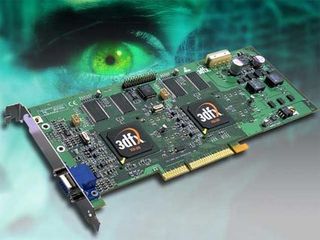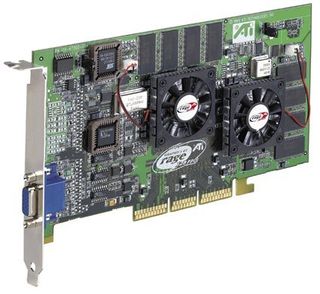Gigabyte's 3D1: Are Two Engines Better Than One?
History Of Multi-Core Cards
In the context of graphics card history, Gigabyte's plans can be construed as either very courageous or simply extremely naive. Several other companies have already tried to take on the challenge of a multi-core chip, and then failed in one way or another. Without a doubt, the most famous of these attempts was 3dfx's dual-core Voodoo 5 card, carrying the model name Voodoo 5 5500. Although it was hotly anticipated by many hardcore graphics enthusiasts, the quad-core Voodoo 5 6000 never made it past the prototype stage. After the Voodoo 5 failed to get enough of a customer response, 3dfx had to shut down its operations and was finally bought by its competitor NVIDIA.

The 3dfx Voodoo 5 5500 is probably the most well-known among the dual-core designs. Unfortunately, 3dfx's design failed to impress the masses, spelling the end for consumer 3D graphics pioneer 3dfx.
ATi, another household name when it comes to graphics cards, also has a history with dual-core attempts. Early in 2000, the Canadian company unveiled the Rage Fury MAXX, a card sporting two Rage 128 graphics chips. Unfortunately for ATi, their card did not make the splash that the company had hoped for. The primary reasons for the card's failure were that it didn't offer a compelling performance compared to the competition at the time (the GeForce 256) and due to its complicated AGP bridge as well as the drawback of being limited to Windows 98.

ATI's Rage Fury Maxx sported two Rage 128 graphics chips and was very short-lived in the market.
Stay on the Cutting Edge
Join the experts who read Tom's Hardware for the inside track on enthusiast PC tech news — and have for over 25 years. We'll send breaking news and in-depth reviews of CPUs, GPUs, AI, maker hardware and more straight to your inbox.
Current page: History Of Multi-Core Cards
Prev Page Gigabyte's 3D1 Offers SLI On A Single Card Next Page History Of Multi-Core Cards, Continued-
Shankovich So funny to look back now and see how abstract the concept of dual GPU design was back then. Happy to see my favorite mobo company be one of the pioneersReply
Most Popular

